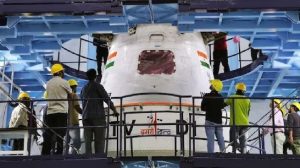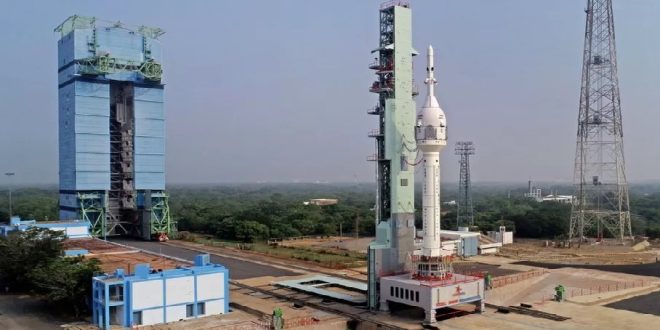22-10-2023
Bureau Report
NEW DELHI: India’s space agency has carried out the first in a series of tests flights ahead of its planned mission to take astronauts into space in 2025.
The Gaganyaan spacecraft was launched at 10:00 local time (04:30GMT) on Saturday from Sriharikota.
 This was the day’s second attempt, the first was put on hold five seconds before the scheduled launch time.
This was the day’s second attempt, the first was put on hold five seconds before the scheduled launch time.
The test was conducted to demonstrate whether the crew could safely escape the rocket in case it malfunctioned.
“I am very happy to announce the successful accomplishment of the TV-D1 (Test Vehicle Demonstration 1) mission,” S Somanath, chairman of the Indian Space Research Organisation (ISRO), said after the launch as his colleagues cheered and applauded.
The successful launch will now pave the way for other unmanned missions, including sending a robot into space next year.
Sending a manned mission with three astronauts into low-Earth orbit will happen only after the successful completion of all these tests and as the government announced last week, it will most likely happen in 2025.
Named after the Sanskrit word for craft or vehicle to the sky, the Gaganyaan project has been developed at the cost of 90bn rupees ($1bn; £897m). It aims to send the astronauts to an orbit of 400km (248 miles) and bring them back after three days. If it succeeds, India will become only the fourth country to send a human into space after the Soviet  Union, the US and China but before that, the space agency ISRO had to demonstrate that the capsule carrying humans could safely return home. And that is what Saturday’s flight, called Flight Test Vehicle Abort Mission-1 (or TV-D1) by ISRO did.
Union, the US and China but before that, the space agency ISRO had to demonstrate that the capsule carrying humans could safely return home. And that is what Saturday’s flight, called Flight Test Vehicle Abort Mission-1 (or TV-D1) by ISRO did.
The launch, which was initially planned for 8:00 local time, was delayed for 45 minutes due to “weather-related issues”. Then, five seconds before the launch, the ground computer issued a hold command after it detected an anomaly in the system.
“We could identify it very fast and correct it,” the ISRO chief said after the launch.
Ahead of the launch, Somanath had described the spacecraft’s “crew escape system (CES)” which was tested on Saturday as “a very critical system”.
“If anything happens to the rocket, we should be able to keep the crew safe by moving them away at least by 2km (1.2 miles) from the exploding rocket,” he told reporters.
“So after take-off, once the rocket is 12km to 16km in the sky, we’ll trigger the abort system and take the crew escape system away from it,” he added.
 Pressmediaofindia
Pressmediaofindia




